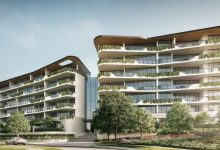The Victorian state government has made good on its election promise to eradicate private embedded power networks in the state, announcing plans to start banning them in 2023, with the exception of networks that run on 100% renewable energy.
State minister for energy Lily D’Ambrosio said on Tuesday that embedded networks would be banned in new residential apartment buildings from January and reforms introduced to ensure residents of existing apartments could access competitive deals for their power.
“We’re banning embedded networks because all Victorians deserve to get the same competitive energy deals and have the same protections, driving down the cost of living when people need it most,” said D’Ambrosio.
“We’ve already delivered energy market reforms, banned door-to-door sales and cold calling, and increased penalties for retailers who engage in dodgy behaviour. This is delivering a better deal for all Victorians.”
The Andrews government campaigned to ban embedded networks – commonly used to supply power to apartment blocks, retirement villages, social housing, and caravan parks – in the lead-up to the 2018 election. In January this year, the findings of an independent review broadly supported that policy goal.
A Final Recommendation Report by an expert review panel found that while well-managed embedded networks had the potential to deliver a range of benefits for customers, evidence suggested that in reality, this was not often the case.
Moreover, the panel found that embedded networks have not been subject to the same type of monitoring and oversight as other energy providers because they fall outside of Victoria’s energy licensing framework for the supply or sale of electricity and gas.
Ultimately, the report found that the current structure and lack of governance meant hundreds of thousands of consumers had been left feeling “trapped” in these private networks, and unable to access a better electricity deal.
Gerard Brody, CEO of the Consumer Action Law Centre, hailed the news as a win for the more than 140,000 residents living in embedded network-powered buildings around the state.
“This is a really positive step which will mean more Victorians can access better competitive deals and save on their energy bills,” he said.
“The fact is the exemption from licensing for embedded networks should never have been allowed in the first place as it enabled an unfair business model that removed choice and important consumer protections.
“We call on the Victorian government to expedite the legislative reforms quickly to make sure there are real consumer protections and choice. In particular, there needs to be concessions for people in these living situations that are applied in the same way as other customers,” Brody said.
Not everyone agrees that banning embedded networks outright is the answer, however, and detail is scant on what exactly it means to set “limited exemptions for buildings that run on 100 per cent renewable energy to the benefit of their residents.”
James Allston, who has worked extensively on providing “new energy” solutions to embedded networks, wrote here in February that while reforms that improve consumer protections are welcome, setting unrealistic renewable energy mandates for apartment buildings could deliver unintended outcomes.
Originally, the suggested benchmark for a minimum renewables supply to embedded networks had been 50%, and even at that level, the vast majority of this for most high-rise apartment buildings would have to be outsourced via power purchase agreements or green power deals.
“If delivering energy to customers at lowest cost is the Victoria government objective then onsite renewable energy target will not necessarily achieve this and in many cases will lead to increased costs for consumers,” Allston said.
“It is incredibly difficult to set up embedded networks retrospectively to enable renewable energy projects.”
But Alex Marks – the director of policy at Melbourne-based Allume Energy, whose SolShare technology paves the way for shared solar and storage at apartment buildings with or without an embedded network – says the Andrews government reforms are much needed.
“Something had to give,” Marks told RenewEconomy on Tuesday, himself a resident of an apartment building and whose own efforts to switch retailers were quickly put in the too hard basket.
“There was no opportunity to access green energy in our building, which means poor customer outcomes and no environmental options.
“Well designed regulation could make building developers lift their game and drive a lot of innovation in the sector.
And setting a renewables supply target, Marks added, means embedded network companies would “actually have to do something… rather than just having people buy at 6c and sell at 24c/kWh.”
But considering the degree of difficultly many building owners would have getting their on-site renewable generation levels to 15%, let alone 50%, Marks says he’s still a bit in the dark on what the 100% target means.
Presumably these details are to come.
The government says a second phase of the review process, which will involve further consultation with industry and consumer groups, will determine the shape of the new licensing regime that will ensure greater choice and protections.









